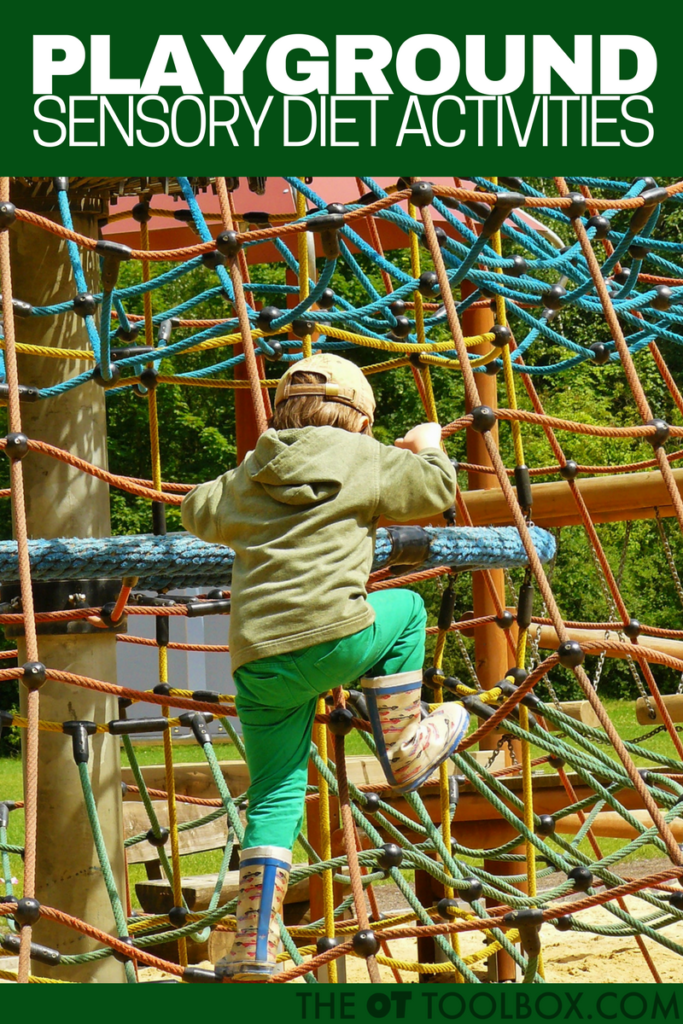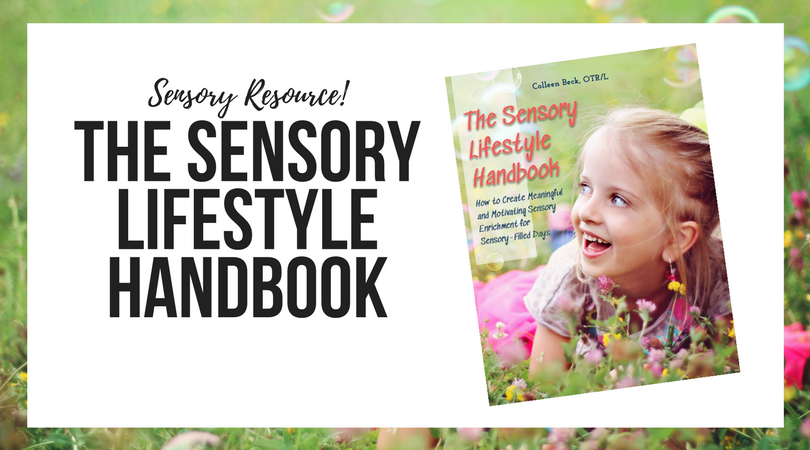The outdoors is a goldmine for play! Kids can be creative, build healthy bodies, and develop the skills that they NEED through playing outdoors. For the child who requires a sensory diet, the outdoors is a goldmine for acquiring the right kind of sensory input. The activities below are those sensory diet activities that can be accomplished through play at the playground. Also check out our resource on playground therapy.
Even a sensory diet for adults can include a walk in the park as a movement and sensory break!

A while back, we shared information about sensory processing at the playground and sensory input that can be provided at the playground. Today, we wanted to share a few quick lists for sensory diet activities that can be implemented at an outdoor (or indoor) playground or play area.
These are sensory diet activities that an occupational therapist can prescribe based on evaluation of a child’s specific sensory needs. Use the playground sensory diet activities listed below as part of a list of specific activities and sensory tools that meet certain sensory processing needs or a home program for children with sensory processing challenges.
There is a lot of research on playing outdoors and about the benefits of just playing outside!
Disclaimer: When therapists develop a specific and highly individualized sensory diet, it’s not just throwing together a day filled with sensory input. A sensory diet is a specific set of sensory tools used to meet and address certain needs of the individual based on sensory need and strategizing. Each of the sensory diet activities above should meet specific needs of the child. Every child is different so applying sensory input to one child may look very different than that of another. Parents should use the tactics below along with your child’s occupational therapist.
Playground Sensory Diet Activities
Climb the slide
Swing on the swings (side to side, forward-back, twist, superman fly, or even upside down!)
Go down the slide (forward, backwards, on belly, on back)
Roll a ball up the slide and catch it before it hits the cround
Ramps
Balance beams
Monkey bars
Rope equipment
Elevated surfaces
Uneven surfaces
Sound tubes and equipment
Teeter totters or bouncy equipment
Merry go rounds or spinning equipment
Climbing walls
Sandbox play
Playground scavenger hunt
Tunnels (Crawl through, army crawl through)
Playground “I Spy”
Bouncing a ball against a wall
Textured sensory scavenger hunt
Climbing surfaces
Accommodations for addressing sensory needs in the backyard
More about outdoor sensory diet activities
Sensory diets and specific sensory input or sensory challenges are a big part of addressing sensory needs of children who struggle with sensory processing issues. Incorporating a schedule of sensory input (sensory diet) into a lifestyle of naturally occurring and meaningful activities is so very valuable for the child with sensory needs.
The Sensory Lifestyle Handbook walks you through sensory diet creation, set-up, and carry through. Not only that, but the book helps you take a sensory diet and weave it into a sensory lifestyle that supports the needs of a child with sensory processing challenges and the whole family.

Colleen Beck, OTR/L has been an occupational therapist since 2000, working in school-based, hand therapy, outpatient peds, EI, and SNF. Colleen created The OT Toolbox to inspire therapists, teachers, and parents with easy and fun tools to help children thrive. Read her story about going from an OT making $3/hour (after paying for kids’ childcare) to a full-time OT resource creator for millions of readers. Want to collaborate? Send an email to contact@theottoolbox.com.



